Uncovering the Best “Old School” Ramen Shops in Japan
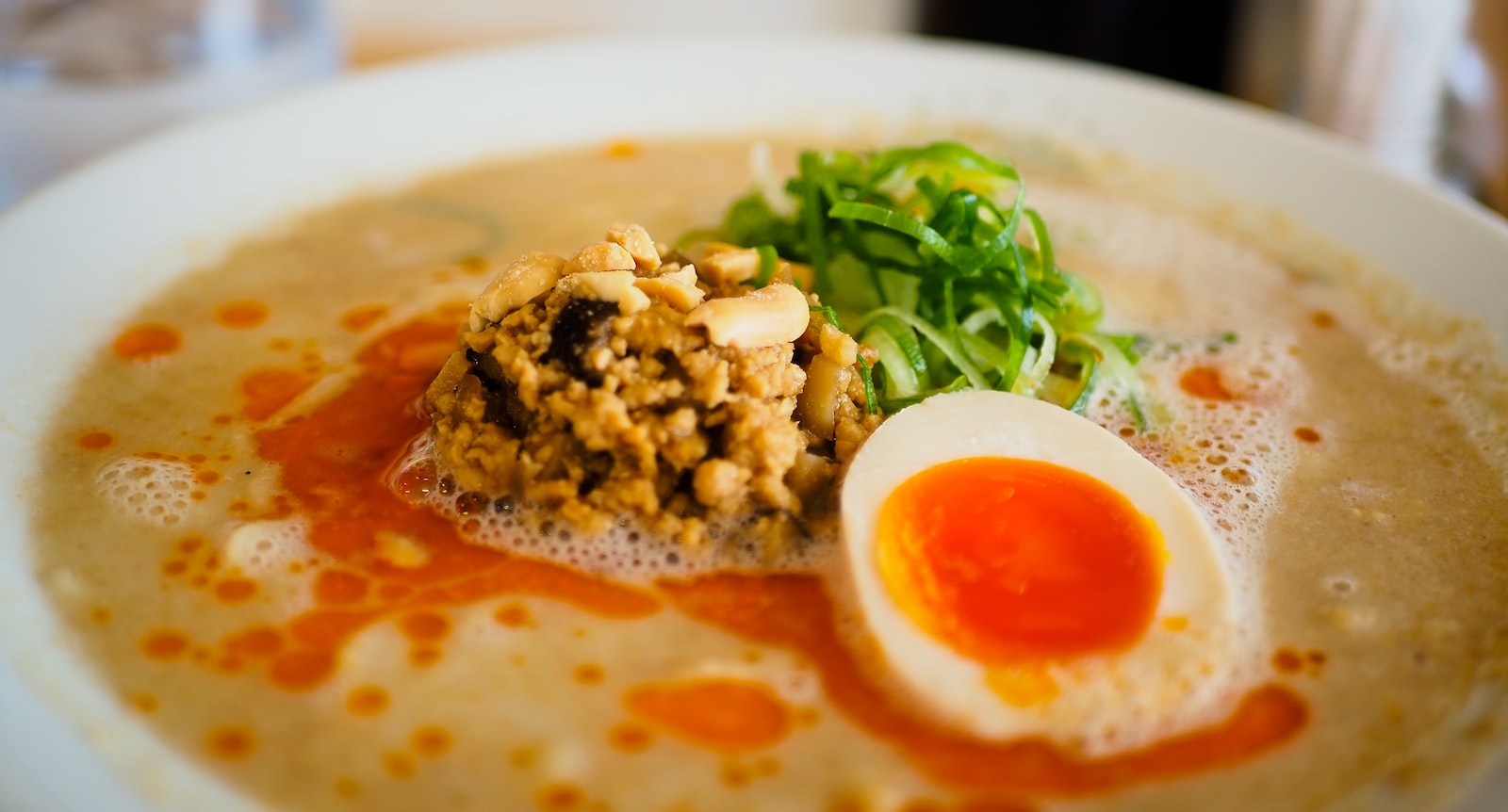
Ramen is a world-famous noodle dish and certainly a must try food in Japan! Many ramen lovers in Japan say, “the best way to know the local culture here is to try their ramen.” All over the world, we can find fine and casual ramen dinning, but ramen in Japan remains different with these other places. One of the reasons international ramen tastes different from the Japanese ramen is the water. We spoke with a Japanese master/chef from a popular Japanese ramen shop opened which opened a few new branches in New York a few years ago. The master/chef said “it’s very unfortunate that we aren’t be able to produce our same great signature taste because of the differences in the water, even though we air-freighted all of the same best quality ingredients from Japan.” It is said that the water in Japan is naturally softer having lower alkalinity and ph levels than the water in the States.
Today, ramen is served all over the world. However it seems there is a deep-rooted image overseas that ramen is just a pork bone based soup noodle dish. That is because most ramen shops that have expanded overseas from Japan are famous pork bone based ramen soup shops from Hakata. This includes shops such as Ippudo, Ichiran, and Hakata Ikkosha. Ippudo is a famous shop with many stores overseas, including New York. Ichiran has become a hotspot having its customers wait on very long lines in Taiwan, Hong Kong and the United States; Hakata Ikkosha has opened a wide range of shops including in Singapore and Los Angeles, US.
Ramen is a noodle soup dish that was originally introduced from China and has become one of the most beloved dishes in Japan over the past few decades. Ramen is affordable and widely available, making it an ideal option for the budget-conscious traveler. It is a great Table For One dish for many Japanese people who typically dine alone. Foreigners who visit Japan thoroughly enjoy their ramen experience and certainly do not mind at all to dine alone, focusing solely on their own delicious hot bowl of goodness!
Ramen shops can be found all over the Japan, and there are so many regional variations. Ramen enthusiasts are particular about their soup and noodles. It certainly depends on the store, but on average, thin noodles are used for light broths made from vegetables/kelp/fish, and thick noodles are used for rich broths, made from pork/beef bones/chicken.
Basic Ramen Types & Regional Varieties

Ramen is generally classified according to the soup base. The main four types of soup base are: soy sauce (in Japanese called shoyu); salt (shio); soybean paste (miso); and pork bone (tonkotsu). However, it is not uncommon to see these soup bases be combined to create new and unique flavors. The second key aspect is the noodles. Ramen noodles are typically made of wheat and tend to be long and chewy. However, countless noodle varieties exist, from thin and straight, to thick and wavy.
There are many different types of ramen in different regions, some of which are widely popular throughout the country. Japan’s three major local ramens are: Sapporo ramen with miso soup from Hokkaido; Kitakata ramen with soy sauce soup from Fukushima; and Hakata ramen with pork bone soup from Fukuoka.
There is a tough and highly competitive ramen industry in Japan. Thus many ramen shops close within three years. In this article, we have picked only ramen shops that have existed for more than half a century. Please enjoy this famous street food at various different shops that has been loved by the Japanese locals for many years. We will first cover Japan’s three major local ramen styles from the Fukuoka, Fukushima, and Hokkaido prefectures and then from the major cities of Tokyo, Osaka, and Kyoto.
Fukuoka Ramen
Fukuoka Ramen means tonkotsu (pork bone) broth ramen. The ramen is usually a white-colored broth. The consistency of the broth is thicker than most, made from boiling pork bones, fat, and collagen over high heat for many hours. This soup is similar to the Chinese baitang, a thick broth also made from boiling pork bones, fat, and collagen. Some shops blend this pork broth with a little bit of chicken and vegetable stock and/or soy sauce. The noodles are thin and straight and is often served with pickled ginger.
King of Pork Broth – Hakuryuken
Hakuryuken ramen shop serves a combination of a silky pork bone broth and soy sauce ramen since 1952. Many people consider Hakuryuken the original local ramen and having the best tonkotsu ramen in Hakata. The simple but delicious ramen noodles are thin and flat. The bowl includes soft pork slices, crunchy spring onions & kikurage (wood ear mushrooms). This house standard ramen is a universal favorite because it is rich, salty, and savory, just like a historic ramen should be.

A Very Traditional Authentic – DARUMA RAMEN
Founded in 1963, DARUMA was the first to create a deep and dense pork bone broth. When they first opened, light broths were most popular. The restaurant is loved by locals and tourists from all over Japan and overseas. Their opaque and pale colored soup is made primarily from pork bones cooked for a long time over extremely high heat. This deeply flavored broth is rich and creamy and is perfectly combined with firm textured, and thin straight noodles which are white in appearance.
Offering a Special Atmosphere – Nagahama Number One
Founded in 1971 as a mobile food stall, the original Nagahama Number One is a legendary ramen stall in Nagahama Fishing Port, the mecca of ramen stalls. However it sadly closed in 2015 due to legal issues. But the new Nagahama Number One shop opened under the same name and is still uses the original recipe but with a different owner. The new shop owner was actually a regular customer at the original one. After he adored the taste, he quit his corporate job and started training in ramen at the Original Nagahama Number One. After 14 years training at a food stall, he opened his own shop. Currently the restaurant has many branches in Japan and overseas, but you can only taste the original unique taste at this restaurant.
Kitakata ramen, in Fukushima
Kitakata ramen is a light soy sauce based soup that is made from the nutrient-rich underground waters flowing from the Iide mountain range. A noodles are firm, medium-thick and curly. Kitakata ramen first sprang up in popularity in the 1980s. In a small town had a population of only 30,000, there were 120 ramen shops in its heyday.
Kitakata ramen has a unique culture of eating ramen for breakfast called Asa-Ra, meaning morning ramen. Many locals claim that Kitakata ramen is something you can eat every day and yet you want to keep coming back for more. There are various theories that why this morning ramen custom took root in Kitakata. However we believe two stories seem most viable. The first is that farmers left for work so very early in the morning. Once they finished their work they went out to eat ramen which was still morning-time. Another story is that in the winter, parents regularly stopped by a ramen shop in the region with their children who were returning from migrant work on the night train.
Morning Ramen – Makoto Shokudō
Makoto Shokudō was started by woman owner in the late 1940s. Her signature broth is a soy-sauce based with dried sardines and pork bone broth—a perfect balance of both lightness and richness. A popular ramen on the menu is the Chashu-ramen made with the tender and “melt-in-your-mouth” slices of braised pork belly. Regulars and ramen lovers start lining up, even before the shop opens at 7:30am. The shop’s peak hour is actually 8am, so if you want to enjoy eating at your own tempo in a calmer atmosphere, it’s best to come after this time period.
A Ramen of Migration History – Genraiken
Ban Kinsei, a Chinese immigrant, founded Genraiken in the mid-1920s. He came to Kitakata where his uncle lived, but was unable to find a job so he began selling Chinese noodles on a street cart. After some trials and errors, he opened his own unique ramen shop named Genraiken. The Negi ramen (scallion ramen) is deeply flavored soy-sauce soup that clings perfectly to the curly, medium-thick chewy noodles. And the scallion brings out its sweet, lightly spicy, and peppery flavors.

A sign outside Genraiken recounts the shop owner’s life story.
One of a Kind Kitakata Ramen- Daiki
Kitakata ramen is famous for its soy sauce based broth. However the ramen shop Daiki has a signature miso ramen recipe that is approximately 70 years. They blend three different types of Shinshu-based miso. The soup base includes their signature pork bone broth, which simmers for a minimum of half a day. The fat on top of the broth is skimmed off constantly. There is thick and rich Chashu (pork-belly) along with variety of vegetables that are lovingly incorporated. Other ingredients such as eggs, bamboo shoots, and green onions added to complete the signature ramen.
The Origins of Japanese Ramen, in Hokkaido
Along with having the freshest seafood, ramen is also synonymous with Hokkaido. In 1884, it is said that the first ramen, called Nankin soba ramen, was served at a restaurant in Chinatown, located in Hakodate city, Hokkaido prefecture. Other Chinese chefs then followed and began to open their own shops in Hokkaido. After the war, ramen rapidly became a staple part of the diet there. Eventually three major ramen styles in Hokkaido emerged, which are Asahikawa Ramen (soy sauce based), Sapporo Ramen (miso based) and Hakodate Ramen (salt based).

Legendary Ramen – Sumire
Sumire is a long-established ramen restaurant in Sapporo. Since 1964, the miso broth ramen is unique as well as being very well known. The menu does feature the full lineup of standard ramen bases such as salt, soy sauce and miso-kimchi, but miso is by far their most popular. The miso ramen toppings include minced meat, chashu, bamboo shoots, onions, mung beans, and scallions. It also features a unique layer of fat across the soup’s surface which acts as a barrier keeping the soup hot until the last sip. In addition many locals love to add soft boiled eggs.
The Pride and Joy of Soy-sauce Based Ramen – Baikohken
Baikohken is one of the best Asahikawa ramen shops as it creates a delicious and truly authentic soy-sauce based ramen. This shop also has many international branches all over the world. This popular soy-sauce based ramen is garnished with scallions, butter, pork slices, and bamboo shoots—and most of regulars like to add on a boiled egg. They also make a “Double Based Soup” which is uniquely blended with two different types of broth; a pork & chicken broth along with a kelp & dried mackerel broth. Baikohken’s homemade ramen noodles do not contain any eggs or food additives.
Hokkaido Ramen Suprema – Ajisai
Ajisai is considered at the top of Hakodate ramen cuisine because of their specialty salt-based ramen, which possesses a light and flavorful clear salt broth. For over 80 years, Ajisai’s ramen soup broth has been made with pork & chicken bones, along with kelp from the local area. It is seasoned with salt, dried squid, sardines, scallops and other local ingredients. The salt ramen’s toppings include bamboo shoots, kaiware sprouts, fish cakes, pork belly, egg, and a generous portion of scallions which cover the soup.
A Great Little Tip: Numerous Famous Hokkaido Ramen Shops in One Location
Good news! You taste various different famous Hokkaido ramen types at Hokkaido Ramen Dojo, which is located on the 3rd floor of New Chitose Airport Domestic Terminal. It is a food court with over 10 different famous ramen shops that are originally located throughout Hokkaido, including our own recommend places such as Ajisai and Baikoken. In addition, we also recommend Shirakaba Sanso for its rich miso and mild butter ramen, and Keyaki is known for its famous Sapporo ramen which traditionally has a deep and complex tasting miso broth.
The Most Diverse Ramen Culture – Tokyo
Tokyo is a city with the most cutting-edge ramen in Japan and in the world. It has all kinds of ramen, from the famous long-established ramen shops that have been loved since before WWII, to the modern ramen shops where new developments and trends continue to take place. Tokyo developed new creations such as Tsukemen ramen (cold ramen noodles served with a separate bowl of flavorful broth for dipping), Mazesoba (similar to the Chinese dry Dan Dan noodles that do not contain soup), Toribaitan (white soup solely made from chicken stock), Vegpota (a thick soup that is solely vegetable based), and Mizutori-kei (soy sauce based soup blended with chicken stock) etc. The varieties are indeed endless! We would next like to introduce three long-established shops that can be called the most basic Tokyo style ramen that we recommend you should try first.
Selling 400 Bowls a Day in Shibuya – Kiraku
Kiraku has been in business for over 60 years and continues to be a huge success, selling 400 bowls of ramen a day. Wonton ramen is delicious while also being a great value. In each bowl there are six homemade wontons dumplings, packed with a generous portion of well seasoned meat paste and crispy deep-fried scallions inside. The juicy dumplings absorb the flavorful ramen broth which is delicious and comforting as it is authentic. Plenty of fried scallions float on top of the soup’s surface, giving it additional sweetness and depth. The ramen broth has the perfect balance of salt, spice, and oil, while the texture of the noodles underneath the wontons are simply wonderful. If you’re coming here for the first time, we definitely recommend choosing the wonton ramen!
Asakusa’s Old-School Ramen – Raishuken
Raishuken stands quietly in the back alley of Asakusa Kokusai Street. As soon as you step inside the store, you will see a wall filled with framed celebrity autographs and photos. Japanese people as well as foreign tourists love this delicious noodle shop. The soup broth base is made of a mix of pork bones, chicken bones, and vegetable stock. It has an impressive dark soy sauce color. The carefully seasoned bamboo shoots are a mouthwatering accent to the taste and texture of the noodles. A famous side menu here is Shumai (steamed pork dumplings) which is a specialty that you want to eat with ramen at Raishuken.

Iconic Soy Sauce Ramen in Ginza – Manpuku
Since 1929, this Chinese-style restaurant called Manpuku has been a local favorite for close to a century. The famous Chuka Soba is considered one of the masterpieces of Tokyo ramen… its recipe has not changed since its establishment. Thin noodles with a supple texture accompanies the gentle flavored soup which possesses a clear soy sauce color. Toppings include a fried egg (instead of a boiled egg!) and Naruto (a fish cake) placed in the middle of the bowl that invites you to taste Japanese ramen nostalgia. Another popular dish here is Hiyashi Chuka, which are noodles in a rich sesame seasoning topped with banbanji chicken (tender steamed chicken).
Gourmet City in Japan – Osaka
Osaka has a reputation for its amazingly delicious dishes, such as Okonomiyaki, Takoyaki, and Udon noodle. People in Osaka know and love food! Osaka is nicknamed the “Kitchen of Japan” and a well-known culinary destination, with everything from street food, BBQ, curry to of course ramen! Osaka’s unique ramen is an essential part of the urban culture.
Open 24 hours – Kinryu
Kinryu is a famous open-air ramen shop which greets you with its huge eye-catching foam dragon at the entrance. The restaurant’s building and tables are all colored red. The menu at Kinryu consists of only two items, ramen and chasumen (pork belly ramen). The ramen consists of a light tonkotsu (pork bone) soup. The best part is that you can add as many toppings as you like, such as leeks, garlic, kimchi, etc… all free of charge! It is a delicious and welcoming taste for those who drink late at night and say, “Let’s have some ramen before going home!” It is one of the best meals to combat your hangover the next morning. Kinryu has five locations located in the Dotonbori and Shinsaibashi areas.
French Technique Vegetable Soup Ramen – Kamukura
Kamukura’s soup is nothing like any of your typical ramen soups. As we said earlier, the Japanese soup base is usually soy sauce, pork bones, or miso. However, Kamukura is the one and only place that has a soup base of French consommé! A former French restaurant owner-chef started Kamukura in 1986 utilizing French culinary methods to make a signature ramen dish called Oishii Ramen (means delicious ramen). We never get tired of eating this ramen everyday! Each store’s “master ramen sommelier” manages the taste and quality of the soup. Their are various toppings you can choose from including sliced pork, perfectly seasoned medium-boiled eggs, lots of cabbage and other options. Currently, the company operates more than 65 branches, mainly in Tokyo and the Western part of Japan.
Good Quality Collagen Rich Soup – Kotan Ramen
Kotan Ramen is popular for its deep umami secret broth, prepared each and every morning. This special opaque soup base is rich in high-quality collagen and contains wheat flour. You can choose from three types of soup base: soy sauce, miso, or salt. The homemade fine wheat noodles are thick and have an elastic texture. A popular side dish is Yaki Gyoza, six-pieces of dumpling with crispy skin and a juicy meaty inside. The skin, vegetables, meat, and other ingredients are domestically sourced, making these dumplings unique and rich in flavor.
Japan’s Ramen Capital – Kyoto
Kyoto is Japan’s ramen capital as there are many popular and long-established stores that have been around here since before the war. There is also an array of ramen stores and food stalls offering new and one-of-a-kind ramen dishes. Kyoto’s ramen culture is one of those rare places in Japan that embraces both traditional and innovative ramen styles. The so-called Kyoto-style ramen soup is a clear broth which is finely seasoned, and its texture is thick.
The Pioneer of Kyoto Ramen – Shinpuku Saikan
In 1938, Mr. Xu Yongbao, a native of Zhejiang Province, China, founded a food stall near Kyoto Station. An actual store eventually took its place and opened in 1945. This somewhat intimidating black-colored soup is made with chicken bones & pork bones. However, the broth has a clean and bright taste and seemingly feels like there’s almost no oil content. It’s certainly easier to eat and enjoy than it looks! The noodles are medium-thick and straight, complimented with a generous portion of thinly sliced pork chashu. It is topped with the crunchy texture of local Kujo green onion, fresh bean sprouts and a raw egg yolk. Another must-have dish is Yakimeshi (pan-fried rice), a boldly flavored rice, which is fully caramelized with soy sauce and lard.

Classic Kyoto Ramen – Honke Daiichi Asahi Honten
Honke Daiichi Asahi was established in 1947. It is located near Kyoto Station, next to the main branch of Shinpuku Saikan, a ramen shop that we just mentioned above. The pork bone-based clear soup has a subtle and sweet soy sauce flavor that works so well with the medium-thick straight noodles. The chashu, a specialty of the restaurant, is made from lean Japanese pork containing just a little fat, and the Kujo leeks add a nice accent to this sweet soup. This well-balanced ramen is popular among foreign tourists as well as the Japanese locals. There are also many branch stores, and the shop has also expanded to Tokyo in 2018.
Rich Back Fat Soup – Mastani Honten
Mastani is a long-established restaurant near the Ginkakuji, a one of Japan’s most classic Zen temples. It first started as a ramen stall in 1946 and quickly grew in popularity. This paved the way to a store-opening in 1948. Mastani’s famous rich umami flavors are from the tonkotsu soup (pork bones) made with pork back fat broth and soy sauce. The portions are small compared to the other ramen shops, so we will recommend ordering extra noodles or rice. Currently, there are several branches in the Kyoto Station Building, as well as in Tokyo.

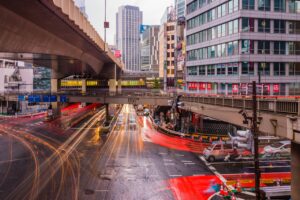
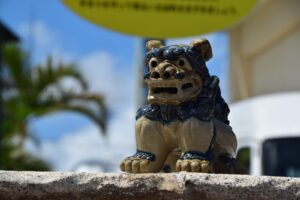
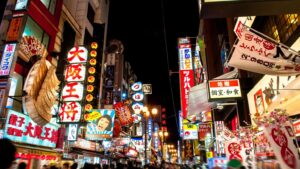
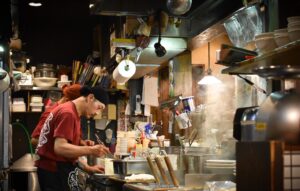
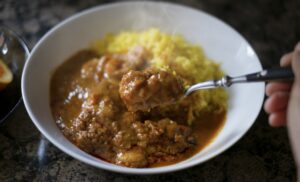
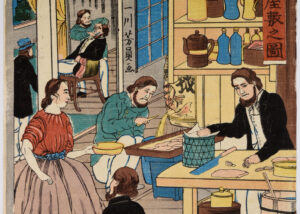
 Instagram
Instagram